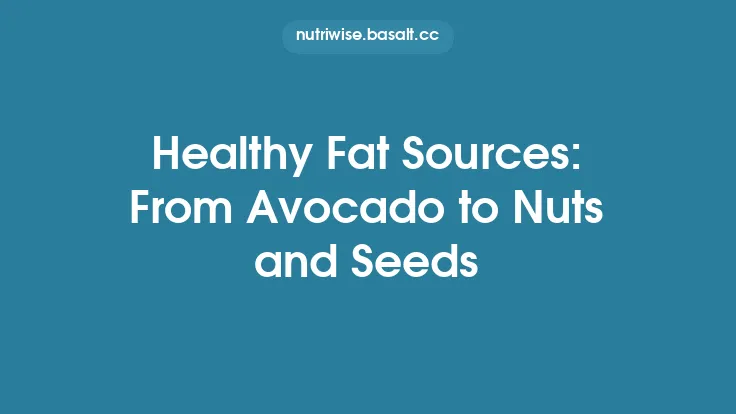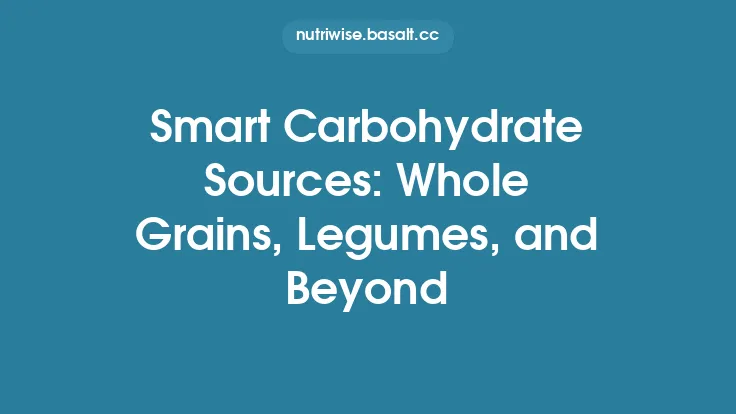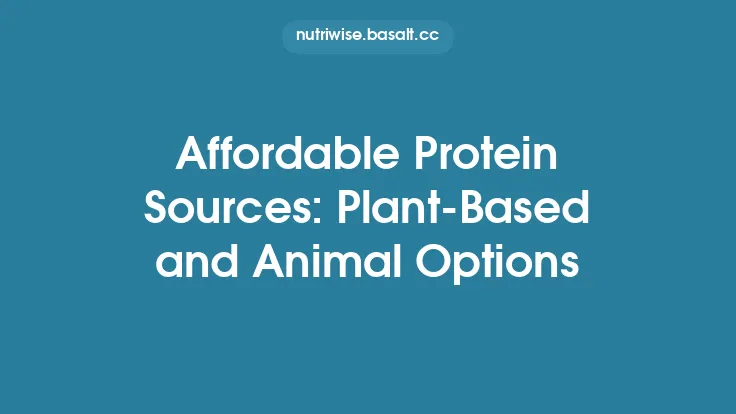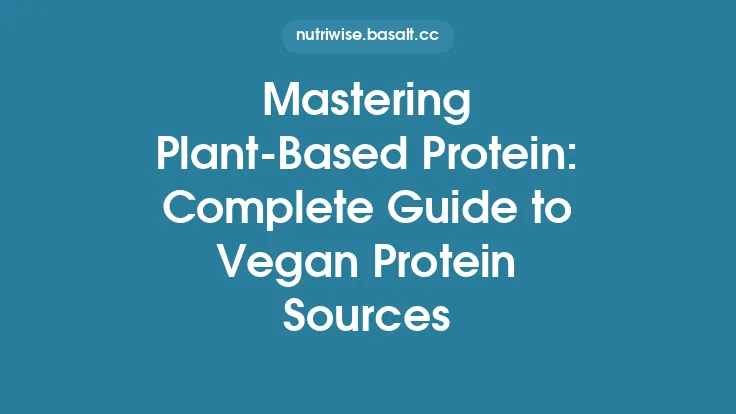Seeds have long been celebrated for their compact nutritional punch, and among the most versatile are chia, hemp, and flax. These tiny powerhouses deliver not only protein but also a suite of essential fatty acids, fiber, vitamins, and minerals that make them ideal staples for anyone seeking a sustainable, plant‑based diet. Their ease of storage, minimal preparation, and adaptability across meals—from breakfast bowls to baked goods—mean they can seamlessly become part of daily nutrition without demanding exotic cooking techniques. Below, we explore each seed’s protein profile, how they compare in terms of amino acid completeness, practical ways to incorporate them into everyday meals, and the broader environmental benefits of choosing these seeds over more resource‑intensive animal proteins.
The Protein Landscape of Chia, Hemp, and Flax
| Seed | Protein (g per 28 g/1 oz) | Complete Amino Acid Profile? | Key Micronutrients |
|---|---|---|---|
| Chia (Salvia hispanica) | 4–5 | Near‑complete; low in lysine | Calcium, magnesium, phosphorus, omega‑3 ALA |
| Hemp (Cannabis sativa, hulled) | 9–10 | Complete; high in arginine & cysteine | Iron, zinc, magnesium, omega‑3 ALA & omega‑6 LA |
| Flax (Linum usitatissimum, milled) | 5–6 | Incomplete (low in lysine) | Selenium, thiamine, manganese, omega‑3 ALA |
All three seeds provide a respectable amount of protein relative to their caloric density, but hemp stands out for delivering the highest protein per serving and a truly complete amino acid profile. Chia and flax, while slightly lower in total protein, compensate with exceptional fiber content and a high proportion of alpha‑linolenic acid (ALA), the plant‑based omega‑3 fatty acid essential for cardiovascular health.
Understanding Amino Acid Completeness
Protein quality is often judged by the presence of all nine essential amino acids (EAAs) in sufficient quantities. Hemp seed protein scores highly on the Digestible Indispensable Amino Acid Score (DIAAS), approaching that of dairy proteins. Its balanced ratios of leucine, isoleucine, and valine make it especially valuable for muscle protein synthesis.
Chia protein, though not fully complete, is relatively rich in lysine—a limiting amino acid in many grains—making it a useful complement to cereal‑based meals. Flax protein is modest in lysine and threonine but compensates with high levels of methionine and cysteine, which support antioxidant pathways via glutathione synthesis.
When combined throughout the day—e.g., chia in a breakfast parfait, hemp in a lunchtime salad, and flax in an evening smoothie—the overall diet can achieve a full complement of EAAs without the need for animal products.
Fiber and Fat: The Dual Benefits
Beyond protein, each seed contributes a distinct fiber and fat profile:
- Chia: Up to 10 g of soluble fiber per ounce, forming a gel when hydrated. This gel slows glucose absorption, promotes satiety, and supports gut microbiota.
- Hemp: Predominantly insoluble fiber, aiding regularity and providing a gentle prebiotic effect. The seed’s fat ratio (≈3:1 omega‑6 to omega‑3) is considered optimal for reducing inflammation.
- Flax: Rich in mucilage (soluble fiber) and lignans, phytoestrogens that have been linked to reduced breast cancer risk. Flax’s fat composition mirrors chia’s, with a high ALA content.
The synergy of protein, fiber, and healthy fats makes these seeds uniquely suited for stabilizing blood sugar, sustaining energy, and supporting heart health.
Culinary Applications: From Simple to Sophisticated
Chia
- Hydrated “Chia Pudding”: Mix 3 Tbsp chia seeds with 1 cup plant milk, sweeten with fruit or maple syrup, and let sit 4–6 hours. The resulting gel is a creamy, protein‑rich dessert or breakfast.
- Egg Substitute: Combine 1 Tbsp chia with 3 Tbsp water, let thicken, and use in baking to replace one egg—ideal for vegans.
- Sprinkling: Add a tablespoon to oatmeal, yogurt, or salads for a subtle crunch and protein boost.
Hemp
- Hemp Hearts (Shelled Hemp Seeds): Toss raw or lightly toasted hemp hearts into grain bowls, smoothies, or homemade granola. Their mild, nutty flavor blends well without overpowering other ingredients.
- Hemp Milk: Blend ½ cup hemp seeds with 2 cups water, strain, and sweeten as desired. The milk provides ~5 g protein per cup and can replace dairy in coffee or cereal.
- Protein Powder: Hemp protein isolate can be mixed into shakes, baked goods, or pancake batter for an extra 15–20 g protein per serving.
Flax
- Ground Flaxseed: Use 1–2 Tbsp ground flax in muffins, breads, or pancakes to increase protein and omega‑3 content. Ground flax releases lignans more effectively than whole seeds.
- Flax “Egg”: Mix 1 Tbsp ground flax with 3 Tbsp water, let sit 5 minutes; this gel works as an egg replacer in recipes.
- Smoothie Booster: Add a tablespoon of milled flax to fruit smoothies for a subtle nutty flavor and thickened texture.
Practical Tips for Maximizing Nutrient Absorption
- Grind When Needed: Whole flax seeds pass through the digestive tract largely intact, limiting nutrient release. Grinding just before use preserves omega‑3s and makes lignans bioavailable.
- Store Properly: Keep seeds in airtight containers, preferably in the refrigerator or freezer, to protect polyunsaturated fats from oxidation.
- Hydrate Chia: Allow chia seeds to absorb liquid before consumption to avoid gastrointestinal discomfort and to unlock their gel‑forming fiber.
- Balance Omega Ratios: While hemp offers a favorable omega‑6:omega‑3 ratio, pairing it with high‑omega‑6 foods (e.g., certain vegetable oils) can tip the balance. Aim for a varied diet rich in other omega‑3 sources like walnuts or algae oil.
Environmental and Sustainability Advantages
- Low Water Footprint: Hemp and chia require significantly less irrigation than many animal protein sources. Hemp, in particular, thrives on marginal soils and can be cultivated with minimal pesticide use.
- Carbon Sequestration: Hemp’s rapid growth (up to 3 m in 3 months) captures atmospheric CO₂ efficiently, contributing to soil health when used in crop rotations.
- Minimal Processing: Most seed products (whole, hulled, or milled) involve simple mechanical steps, reducing energy consumption compared with the extensive processing of soy isolates or dairy proteins.
- Versatile Growing Regions: Chia thrives in arid, high‑altitude environments (e.g., Central America), while flax prefers temperate climates, allowing for global production without overreliance on a single ecosystem.
These attributes align with the principles of sustainable and ethical eating, offering protein sources that are both nutritionally robust and environmentally responsible.
Potential Concerns and How to Address Them
| Issue | Seed | Mitigation |
|---|---|---|
| Allergies | Hemp (rare) | Start with small portions; consult an allergist if symptoms arise. |
| Oxidative Rancidity | All three (high polyunsaturated fats) | Store in cool, dark places; use within 6–12 months of opening. |
| Phytic Acid | Flax (moderate) | Soaking or fermenting flax meals can reduce phytic acid, improving mineral absorption. |
| Caloric Density | Hemp (higher fat) | Portion control—1 oz provides ~166 kcal; balance with lower‑calorie foods. |
| Digestive Sensitivity | Chia (high soluble fiber) | Gradually increase intake and ensure adequate hydration. |
Overall, the benefits far outweigh these manageable considerations for most individuals.
Comparing Seeds to Other Plant Protein Sources
| Parameter | Chia | Hemp | Flax | Lentils (reference) |
|---|---|---|---|---|
| Protein (g/oz) | 4–5 | 9–10 | 5–6 | 9 |
| Complete EAAs | Near‑complete | Complete | Incomplete | Incomplete |
| Fiber (g/oz) | 10 (soluble) | 5 (insoluble) | 8 (mixed) | 15 |
| Omega‑3 ALA (mg/oz) | 5,000 | 2,500 | 6,000 | 200 |
| Environmental Impact (water use) | Low | Low | Low | Moderate |
Seeds excel in delivering a balanced mix of protein, fiber, and omega‑3s within a small serving size, making them especially convenient for on‑the‑go nutrition.
Building a Seed‑Centric Protein Routine
- Morning: Prepare a chia pudding with plant milk, topped with berries and a drizzle of honey.
- Mid‑Morning Snack: Blend a smoothie with a scoop of hemp protein powder, banana, spinach, and almond milk.
- Lunch: Toss a mixed‑green salad with a tablespoon of hulled hemp seeds, roasted vegetables, and a lemon‑tahini dressing.
- Afternoon: Sprinkle ground flax onto whole‑grain toast with avocado.
- Dinner: Incorporate milled flax into a quinoa‑based pilaf or use it as a binder in veggie burgers.
- Evening: Add a teaspoon of chia to warm oat milk for a calming bedtime drink.
By rotating the seeds throughout the day, you ensure a diverse intake of amino acids, micronutrients, and healthy fats without monotony.
Bottom Line
Chia, hemp, and flax seeds embody the ideal intersection of nutrition, versatility, and sustainability. Their protein content—especially hemp’s complete amino acid profile—makes them reliable plant‑based alternatives to animal proteins, while their abundant fiber and omega‑3 fatty acids support heart, gut, and metabolic health. Simple storage and preparation methods allow these seeds to be incorporated into virtually any meal, empowering individuals to meet protein needs responsibly and deliciously. Embracing these nutrient‑rich seeds not only enriches personal well‑being but also contributes to a more ethical and environmentally conscious food system.





